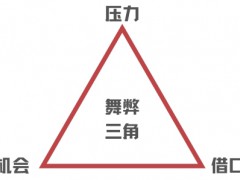据今日油价5月30日报道,尽管股票市场和债券市场在过去两个月里暴跌,但美元却凭借其“全球安全港”的地位不断走强。
美元和石油价格经常是负相关的,因为石油是以美元定价的,这使得用其他货币购买石油相对更贵。
自3月底以来,油价和美元一直在上涨,达到2019年5月以来的最高正相关性。
对大多数投资而言,现在都是困难时期。标准普尔500指数和Nasdaq指数已连续七周下跌,而道琼工业指数表现更糟,连跌八周,为1932年大萧条以来最长连跌时间。今年以来,标准普尔500指数下跌了13.9%,纳斯达克指数下跌了23.1%。与此同时,与2022年比特币超过30%的跌幅相比,全球债券10%的跌幅看起来似乎是温和的了。
但对美元来说,这是一段美妙的时期。
衡量美元兑一篮子六种全球货币汇率的美元指数目前徘徊在20年高点附近。自今年年初以来,美元指数上涨了8%,要知道,在过去12个月里,它上涨了14%。本月初,美元指数触及105以上的20年高点,目前较峰值水平低了不到3%。美元兑单一货币表现更为惊人,即美元兑日圆仅今年一年就升值了13%以上,兑英镑在14个月里升值了36.30%。
但是强势的美元并没有阻止一种商品的发展,尤其是原油。
油价的牛市几乎没有注意到美元的上涨,并设法打破了原油与美元的历史反向关联,从而表明根据当前的市场基本面,原油仍有上涨空间。
通常情况下,美元价值与包括石油在内的大多数大宗商品价格呈反比关系。从历史上看,大宗商品价格往往在美元兑其他主要货币走强时下跌,在美元兑其他主要货币走弱时上涨。尽管这种相关性并不完美,但随着时间的推移,美元和大宗商品价格之间往往存在显著的反向关系。
自3月底以来,油价和美元一直在同一方向走高,并创下2019年5月以来的最高正相关性。
由于全球疫情削弱了原油需求,石油和美元之间通常的负相关关系在2020年和2021年初保持不变。但许多分析师现在预计,鉴于致密油市场和全球经济面临的更广泛风险,这种积极联系将持续下去。
瑞银分析师Giovanni Staunovo曾表示,“考虑到闲置产能较低,未来可能会出现更大的供应中断,而石油需求可能会持续增加,我预计石油将主要受自身基本面因素推动”。
鉴于目前原油交易价格在每桶115美元左右,摩根大通预计,布伦特原油第二季整体均价将达到每桶114美元,甚至一度飙升至每桶120美元以上。
另一个导致美元走强与油价脱节的因素是,当前的能源危机对欧洲的打击最为严重,MUFG新兴市场研究主管Ehsan Khoman表示,“从历史上看,能源危机和通货膨胀的冲击都集中在美国,因此美元看跌。欧洲是最依赖能源进口的地区,现在恰好是危机的震中,并且已经在努力应对严重的能源贸易逆差。由于供应短缺,煤炭、天然气和石油价格继续保持在高位,美国以外的全球经济所遭受的损失比美国更大,进而导致美元升值”。
换句话说,这不再只是美联储的问题。
众所周知,联邦基金利率的变化会对美元产生影响。每当美联储提高联邦基金利率,它通常会提高整个经济的利率。较高的收益率吸引了寻求债券等利率产品更高回报的海外投资者的投资资本。
反过来,全球投资者会卖出以本国货币计价的投资,换取以美元计价的投资,从而导致汇率走强,美元走强。
包括量化紧缩在内,美联储强硬立场助长了美元反弹初期阶段。但是,能源安全方面担忧以及欧洲重大地缘政治动荡正在推动第二阶段的上涨,不仅是美元上涨,油价也在上涨。
王佳晶 摘译自 今日油价
原文如下:
Oil Prices Rally Despite Strong Dollar
While the stock market and bond markets have crashed over the last two months, the dollar has gone from strength to strength thanks to its status as a global safe haven.
The U.S. dollar and oil prices are frequently inversely related due to the fact that oil is priced in dollars which makes it relatively more expensive to buy with other currencies.
Oil prices and the dollar have been rising since late March, hitting the highest positive correlation since May 2019.
These are rocky times for most investments. The S&P 500 and Nasdaq have each fallen for seven consecutive weeks while the Dow Jones Industrial Average has fared even worse, dropping for eight weeks straight, the longest losing streak for the index since the Great Depression, in 1932. The S&P 500 is now down 13.9% in the year-to-date while Nasdaq has dropped 23.1%. Meanwhile, a 10% contraction in global bonds only looks tame when compared to Bitcoin's more than 30% decline in 2022.
But it has been a wonderful stretch for the dollar.
The U.S. Dollar Index, which pits the dollar against a basket of six global currencies, is hovering around 20-year highs. Since the beginning of the year, the dollar index has gained 8%; and in the last 12 months, it has risen 14%. The dollar index hit a two-decade high above 105 earlier this month and is currently trading less than 3% below those peaks. The dollar has performed even more spectacularly against single currencies: Against the Japanese yen, the dollar has appreciated more than 13% this year alone and gained 36.30% in 14-months against the sterling pound.
But a brawny dollar has failed to stop one commodity in particular: crude oil.
The oil price bull run has been taking little notice of the greenback’s advance, and has managed to snap crude's historical inverse link to the dollar thus signaling it still has room to run based on current market fundamentals.
There's normally an inverse relationship between the value of the dollar and most commodity prices including oil. Historically, commodity prices have tended to drop when the dollar strengthens against other major currencies, and rise when the dollar weakens against other major currencies. Although the correlation is not perfect, there's often a significant inverse relationship over time between the dollar and commodity prices.
Positive correlation
Oil prices and the dollar have been moving in the same direction higher since late March, and hit the highest positive correlation since May 2019.
The usual inverse correlation between oil and the dollar remained unchanged in 2020 and into early 2021 as demand for crude was undermined by the global pandemic. But many analysts now expect the positive link to persist given the tight oil market and broader risks to the global economy.
"Considering that spare capacity is low, there are likely larger supply disruptions ahead of us, and that oil demand will likely keep increasing, I would expect that oil will primarily be driven by its own fundamentals," UBS analyst Giovanni Staunovo has said.
With oil currently trading around $115 a barrel, JPMorgan expects Brent prices to average $114 a barrel over the second quarter as whole, and even surge to over $120 a barrel at one point.
Another factor that has been contributing to the disconnect between a stronger dollar and oil prices is the fact that the current energy crisis has hit Europe the hardest: "Historically, energy crises and inflationary shocks were centered on the U.S. and hence dollar bearish," MUFG's head of emerging markets research, Ehsan Khoman has said. Europe-- the region most heavily reliant on energy imports--now happens to be the epicenter of the crisis, and is already grappling with deep energy trade deficits.
"As coal, gas and oil prices continue to remain elevated on supply scarcity, global growth ex-U.S. is suffering more than the U.S. economy, and by extension, the U.S. dollar is appreciating," Khoman has added.
In other words, this is no longer only about the Fed.
Changes in the federal funds rate are known to impact the U.S. dollar. Whenever the Federal Reserve increases the federal funds rate, it typically increases interest rates throughout the economy. Higher yields attract investment capital from investors abroad seeking higher returns on interest-rate products such as bonds.
In turn, global investors sell their investments denominated in their local currencies in exchange for U.S. dollar-denominated investments, resulting in a stronger exchange rate in favor of the U.S. dollar.
The Fed’s hawkish stance including quantitative tightening fueled the initial stages of the dollar rally. But energy security concerns as well as major geopolitical upheavals in Europe are now fueling a second phase of not only the dollar rally but the oil price rally, too.
免责声明:本网转载自其它媒体的文章及图片,目的在于弘扬石化精神,传递更多石化信息,宣传国家石化产业政策,展示国家石化产业形象,参与国际石化产业舆论竞争,提高国际石化产业话语权,并不代表本网赞同其观点和对其真实性负责,在此我们谨向原作者和原媒体致以崇高敬意。如果您认为本站文章及图片侵犯了您的版权,请与我们联系,我们将第一时间删除。







